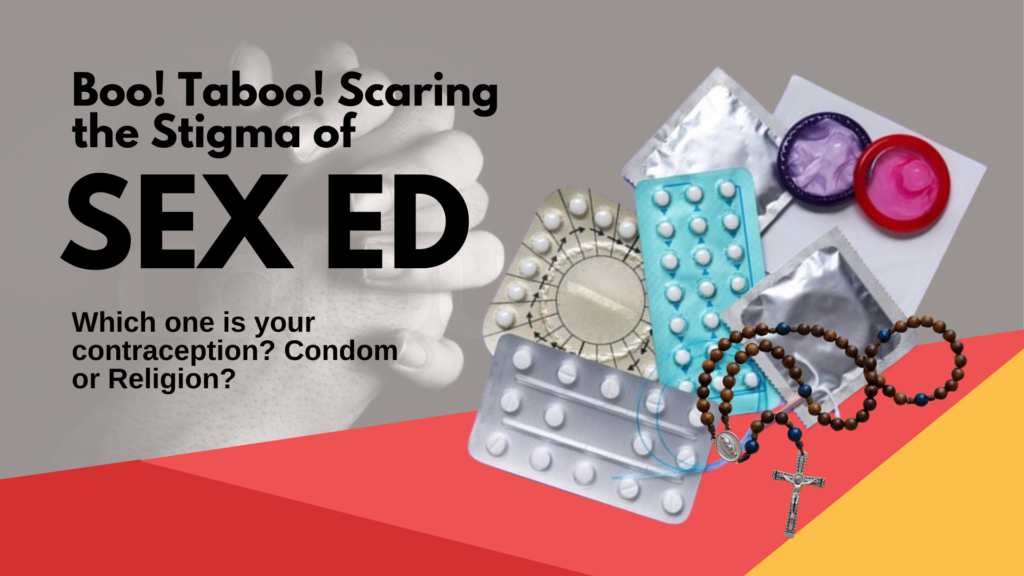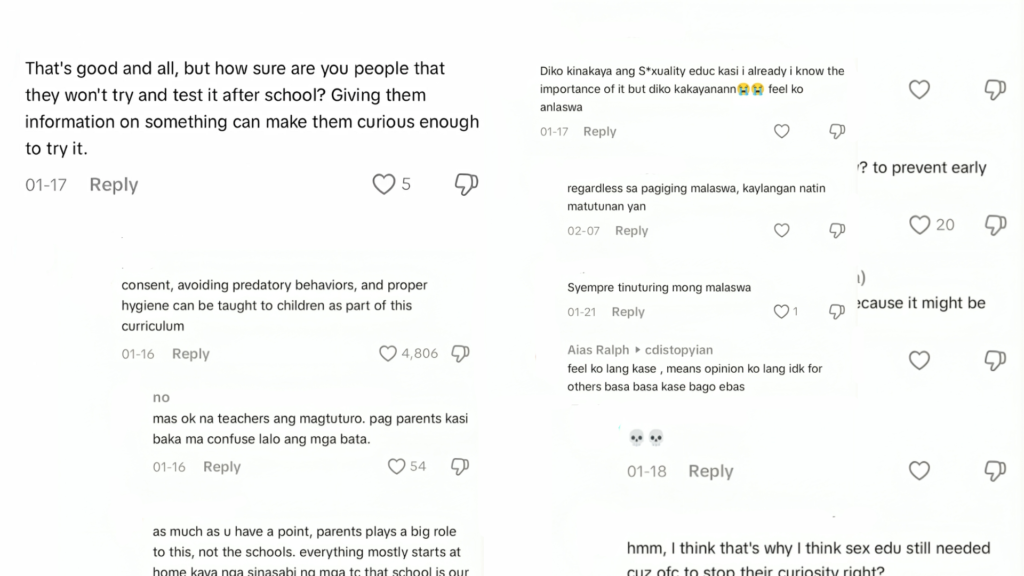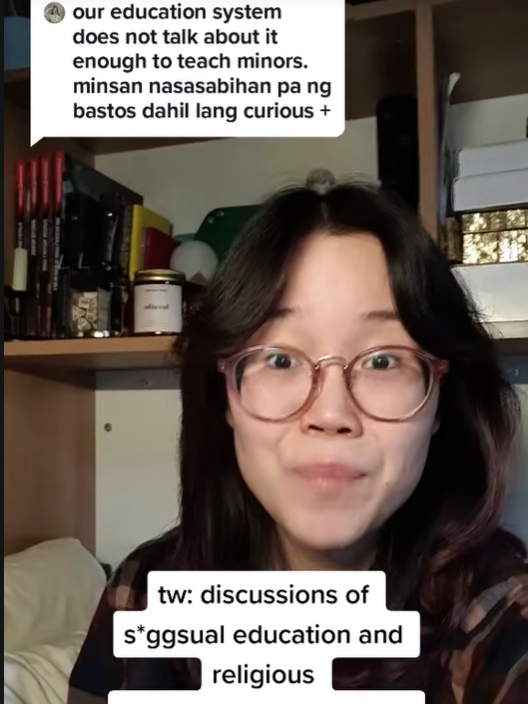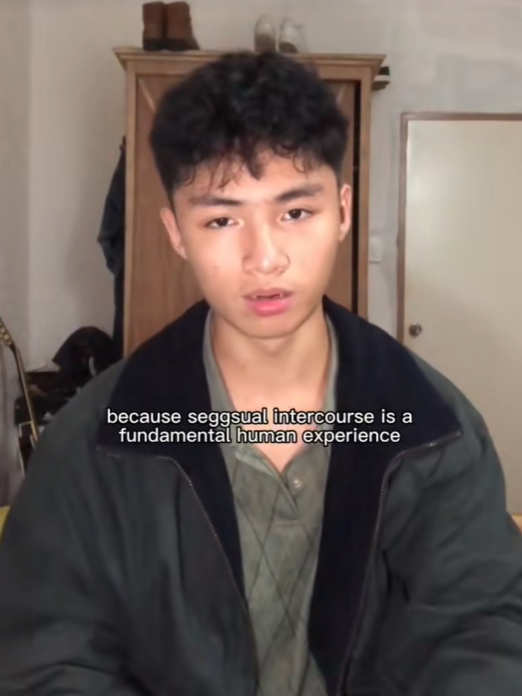Boo! Taboo! Scaring Away the Stigma of Sex Education
Written by Princess Jane Gemotra
Do you agree to the implementation of sex education in the Philippines? Do you think it is beneficial? Or perhaps, you disagree due to religious beliefs as well as other individual factors? Have you ever wondered why and how people started to be more open to such topics?

In a religious country like the Philippines, the term “sex education” is often treated like a plague – a taboo. Most of the time, elders discourage children and youth from the concept of it, and of anything about sexuality, in general, because it is viewed as sinful and disgraceful.
The Philippines remains one of the countries that do not teach sex education in its curriculum. It also has one of the highest rates of teenage pregnancy in Southeast Asia. According to data from Save the Children (2022), there were 59 pregnancies per 100,000 children under 15 years old, a 35% hike from 2021. The statistics show that one of the reasons for teenage pregnancy is the lack of access, or more like the absence of sex education.
Oftentimes, when anyone hears sex education, the first thing that comes to mind is sexual intercourse. Sexuality education aims to develop and strengthen the ability of children and young people to make conscious, satisfying, healthy, and respectful choices regarding relationships, sexuality, and emotional and physical health. In the eyes of many, the act of mentioning this topic is deemed taboo.
Why is this the case? Around 80% of the Philippine population identifies as Roman Catholic. Accordingly, the Catholic Church largely influences the state of sex education in the country. The Catholic Church opposes sex outside of marriage and fears sex education will increase sexual relations. The Catholic Church consequently remains critical of the RH Act, increasing difficulties in putting the RH Act into concrete action. Even though the country’s state is separated from the church, its influence greatly affects not only the opinion of the masses but also the laws and policies.
However, times have changed. Like most things in today’s world, the youth have shifted the narratives. A post from TikTok of GMA News evoked a variety of opinions from all ages, particularly the youth. Some agree, some don’t. One side expressed their agreement – of how it would help the students fight curiosity and be more educated about the topic. Some expressed their fear that it would lead to more sexual activity, and that the schools might teach them things that should not be taught instead of focusing on sensible education.

Courtesy: TikTok
In another post, more youths showed disagreement due to the influence of religious beliefs. Religion can be a powerful force, positive or negative, in the lives of young people. Despite the continuous debate over whether religion is decreasing in societal prevalence and influence or not, religion remains a significant social factor for many of the world’s youth (Krauss et al., 2012). Some, on the other hand, showed disagreement in accordance with the differences in the culture of our country and the West. They claimed that they want to keep the conservative tradition of the country rather than adopt the liberated way of living of Western regions.
Youth of today tend to be open to sex education conversations because it helps them understand their bodies, build healthy relationships, and make informed decisions about their sexuality and reproductive health. Comprehensive sex education also teaches about consent, boundaries, and where to seek help, empowering them to navigate potential risks and navigate their own bodies and identities.


Courtesy: TikTok
The youth have begun to open their minds and encourage intelligent discussions on several topics, and one of them is sexual education. This is due to reasons such as: young people have grown up in an era of unprecedented access to information through the internet and social media. People have also started to acknowledge that sexual health is an integral part of overall well-being. It is easily recognizable how a lack of awareness affects a population and the shortcomings of this approach, such as unintended pregnancies and STIs.
Whether against or not, everyone has their reasons influenced by different morals and values. This variety of opinions, on the brighter side, allows a more open and healthy discussion that we greatly need in today’s era. The youth aspire to be advocates – to be heard. Through advocating, they are one step closer to the change they desire. The first step we should take to fight these issues is to scare away the stigma within ourselves. We can’t face the battle if we’re scared of our own ghosts—the taboo that we grew up with.
Can we blame people for seeking awareness and education that they have been deprived of for decades? For you, which one is the better contraception? Condom or Religion?
What do YOUTH think? What do YOU think?
References:
Hanna Panoringan. (2024, November). Smart Parenting. https://www.smartparenting.com.ph/life/news/doh-childhood-pregnancy-rates-philippines-a6837-20241126?s=mbil1jvtkon4hiqtdgmo8eb454
Sexuality education (2015). Sex Education, 16 (4), 427–431. https://doi.org/10.1080/14681811.2015.1100599
CPD flags rising pregnancy among young girls; demands urgent action. (n.d.). Philippine News Agency. https://www.pna.gov.ph/articles/1241871
Callanga, K. (2020, June 6). Sexual education in the Philippines: Facts and misconceptions. Hello Doctor. https://hellodoctor.com.ph/sexual-wellness/sex-ed-philippines/